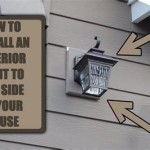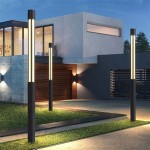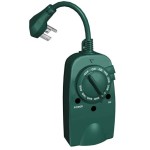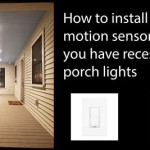Outdoor Lighting DIY Tips
Outdoor lighting can significantly enhance the beauty and functionality of your outdoor spaces. It can create a welcoming ambiance, improve safety, and extend the enjoyment of your yard. While professional installation is always an option, many DIY projects can be tackled with the right planning and tools. This article will provide helpful tips and guidance for those interested in taking on outdoor lighting projects themselves.
Planning Your Outdoor Lighting Project
Before diving into the installation, it's crucial to plan your project thoroughly. This involves assessing your needs, considering the aesthetics, and understanding the technical aspects. Start by identifying the areas you want to illuminate, such as pathways, patios, gardens, or specific features. Determine the desired lighting effects, whether you need functional lighting, decorative accents, or a combination of both.
Next, consider the type of lighting fixtures that best suit your needs and style. Choose between traditional lanterns, modern spotlights, string lights, or solar-powered options. Consider factors like energy efficiency, durability, and ease of installation. Also, take into account the overall design of your home and landscape to ensure the lighting complements your existing aesthetic.
Finally, assess the electrical requirements of your project. Determine the appropriate voltage and amperage needed for all fixtures. If your existing electrical system cannot accommodate the new lighting, consider hiring a qualified electrician to make necessary upgrades. Remember to factor in safety considerations, such as the installation location, potential hazards, and grounding requirements.
Types of Outdoor Lighting
Outdoor lighting comes in various forms, each serving a unique purpose and offering a different aesthetic. Here are some common types of outdoor lighting:
Path Lighting: Designed to guide pedestrians along walkways and pathways, path lights typically use low-voltage LEDs or solar-powered bulbs. They are usually mounted on stakes or posts and spaced evenly for consistent illumination.
Accent Lighting: Used to highlight specific features in your landscape, such as trees, sculptures, or water features. Accent lights can be spotlights, floodlights, or landscape lighting fixtures, providing focused illumination that enhances the visual appeal of these elements.
Security Lighting: Designed to enhance security around your property, security lights are typically motion-activated and provide bright illumination when movement is detected. They deter intruders and increase visibility in dark areas.
Decorative Lighting: Used to create a warm and inviting ambiance, decorative lighting includes string lights, lanterns, and holiday decorations. They add a touch of charm and festivity to outdoor spaces.
Solar-Powered Lighting: An eco-friendly and convenient option, solar-powered lights utilize solar panels to charge batteries that power the bulbs. These lights are ideal for areas without readily available power sources.
Installing Outdoor Lighting
Once you’ve gathered the necessary materials and tools, you can begin the installation process. The specific steps will vary depending on the type of lighting chosen but here are some general guidelines:
1. Plan the Layout: Before installing any fixtures, map out the placement of your lights on paper. Consider the desired lighting effects, visibility needs, and any obstacles that need to be avoided.
2. Determine the Power Source: Connect the lighting to your existing electrical system. This could involve running new wiring, tapping into existing outlets, or using a transformer for low-voltage lights.
3. Install the Fixtures: Securely mount the fixtures to posts, walls, or other surfaces according to the manufacturer's instructions. Use appropriate screws, anchors, and mounting hardware to ensure stability.
4. Connect the Wiring: Connect the wires from the fixtures to the power source, ensuring proper polarity and grounding. Use weatherproof electrical connectors and wire nuts to ensure safe and reliable connections.
5. Test the Lights: Once the installation is complete, test all fixtures to ensure they are working correctly. Check for any loose connections, faulty bulbs, or other issues.
6. Protect Your Lights: Consider using weatherproof covers or enclosures to protect your fixtures from the elements. This will extend their lifespan and ensure consistent performance.
Outdoor lighting DIY projects can be an enjoyable and rewarding experience. By carefully planning, selecting the right fixtures, and adhering to safety guidelines, you can transform your outdoor spaces into inviting and functional areas.

Tips For Diy Outdoor Lighting Jellyfish

Tips For Diy Outdoor Lighting Jellyfish

27 Unique Diy Outdoor Lighting Ideas Tips Remodeling Expense

Install Landscape Lighting For Added Curb Appeal

How To Light Your Garden At Night Sunset

Diy Outdoor Lights Simple And Easy Ideas For Homes Craftionary

Backyard Lighting Ideas

19 Stylish Outdoor Lighting Ideas The Best Patio

Outdoor Landscape Lighting Design Tips Ideas Environmental Designs

Expert Outdoor Lighting Design Tips 1000bulbs Blog
Related Posts







